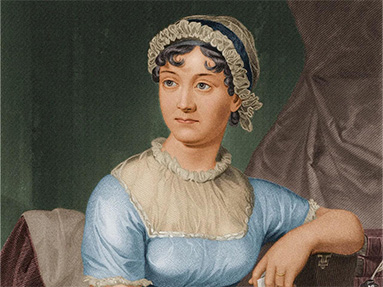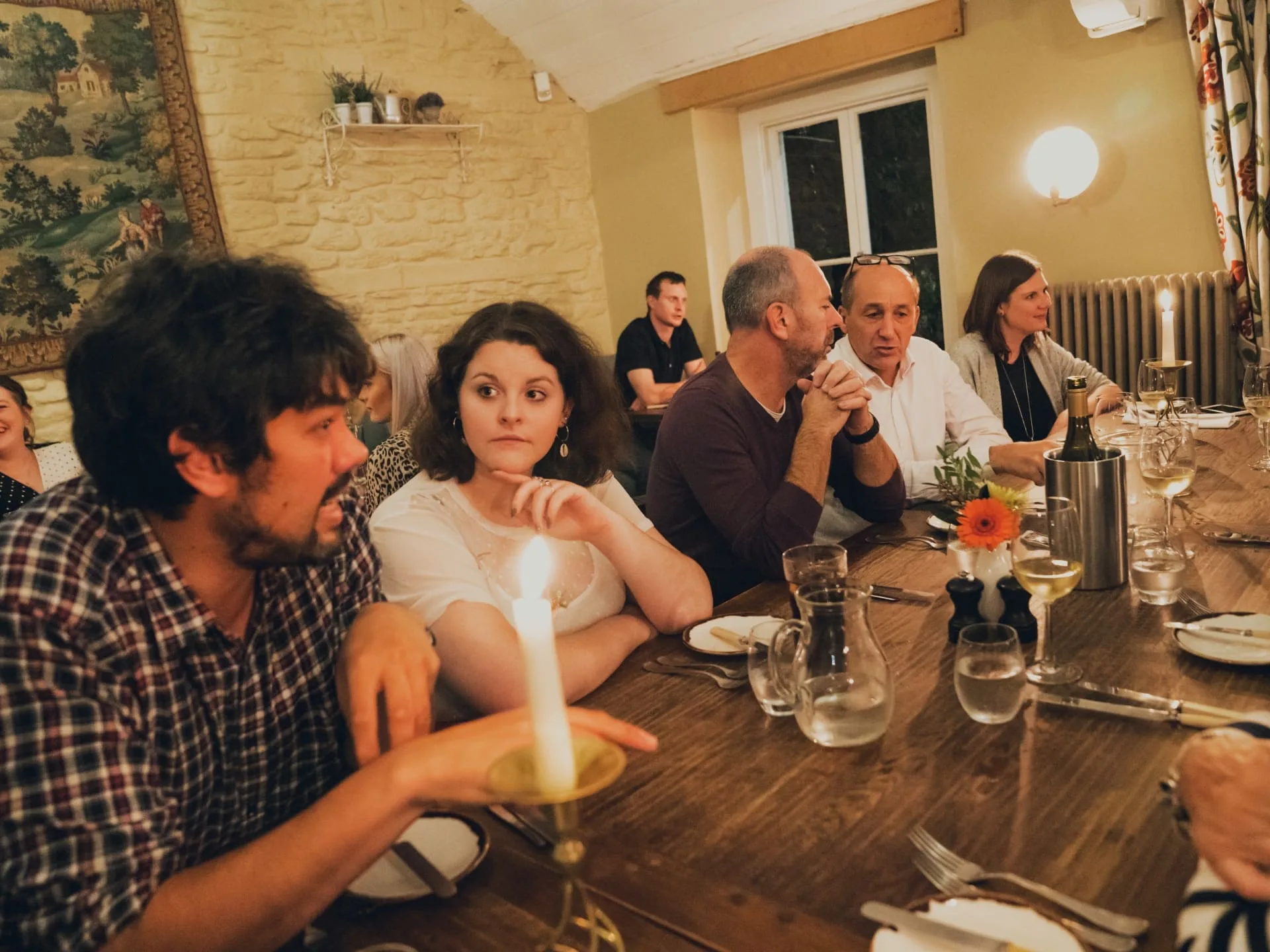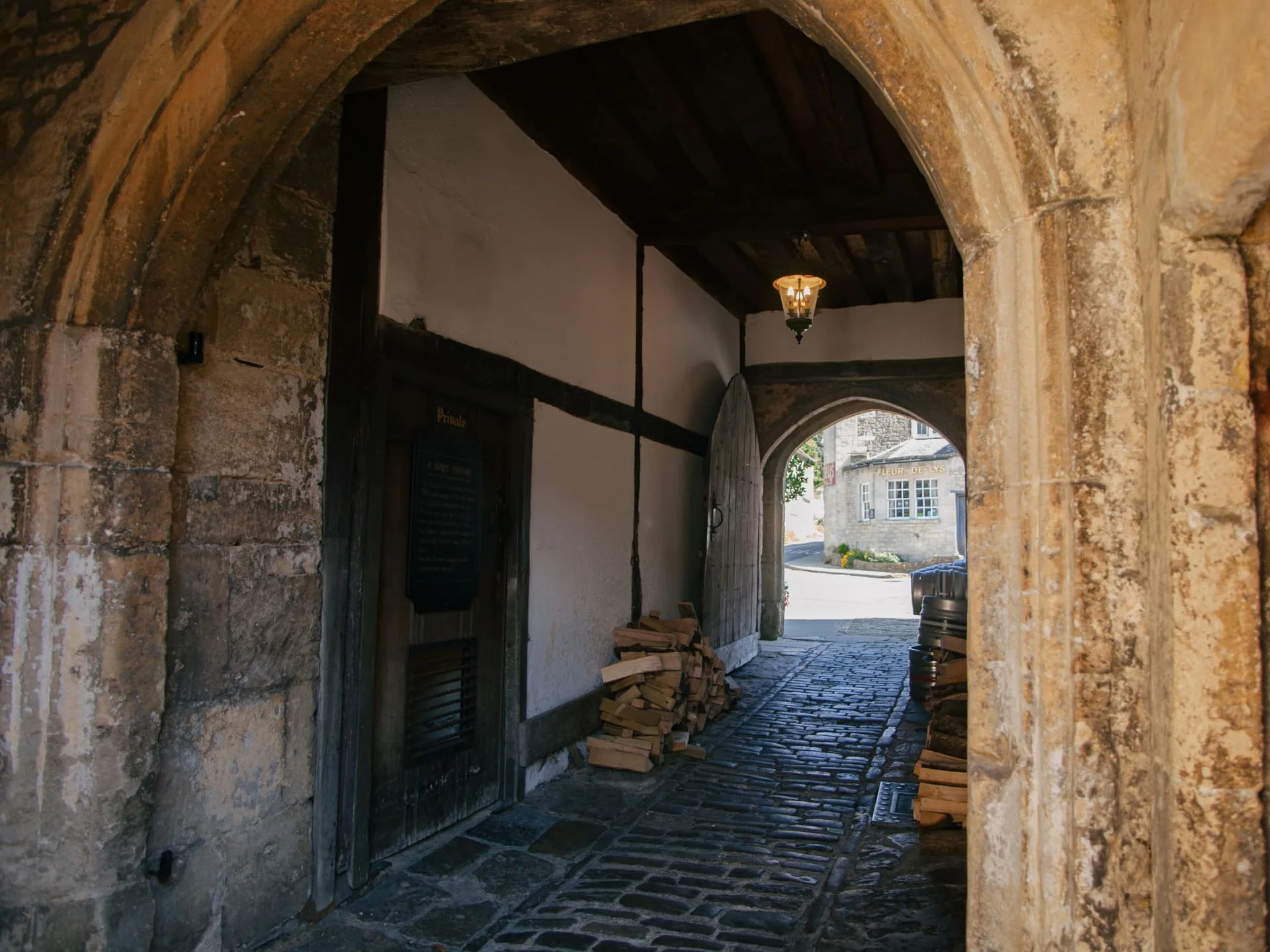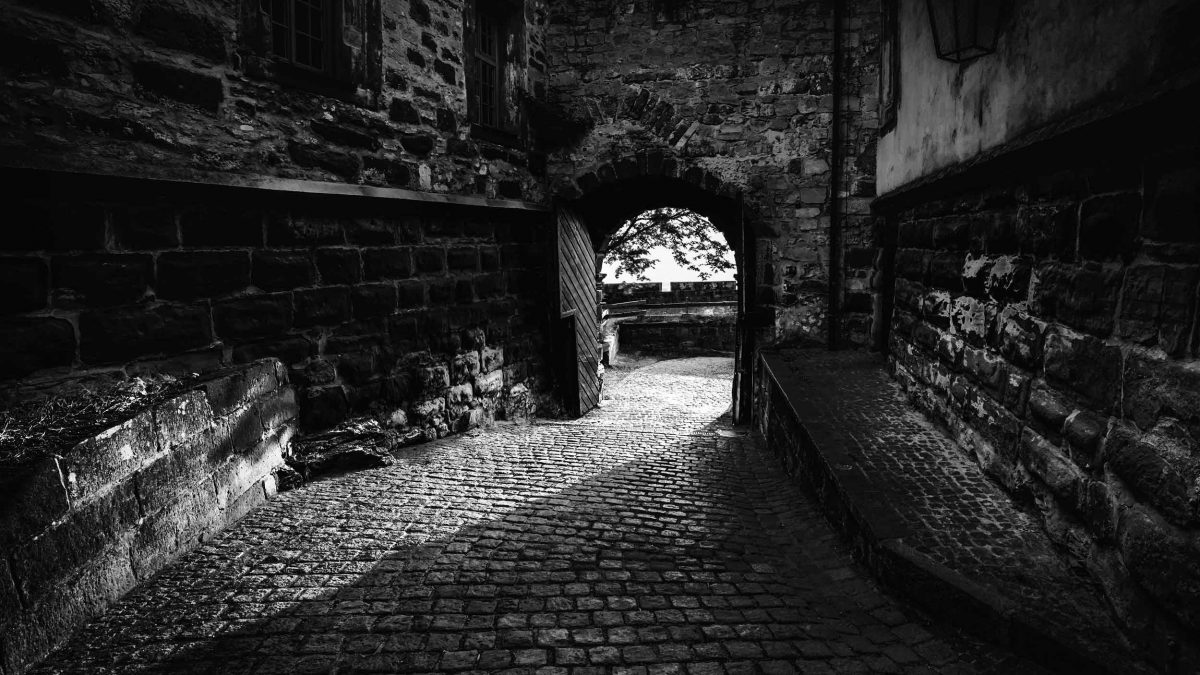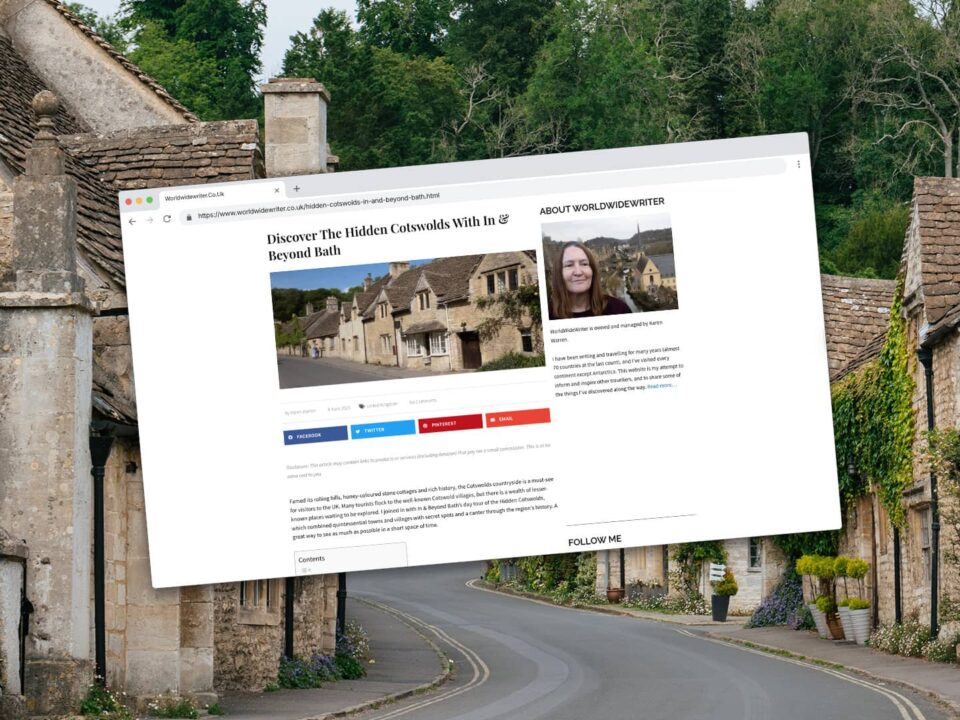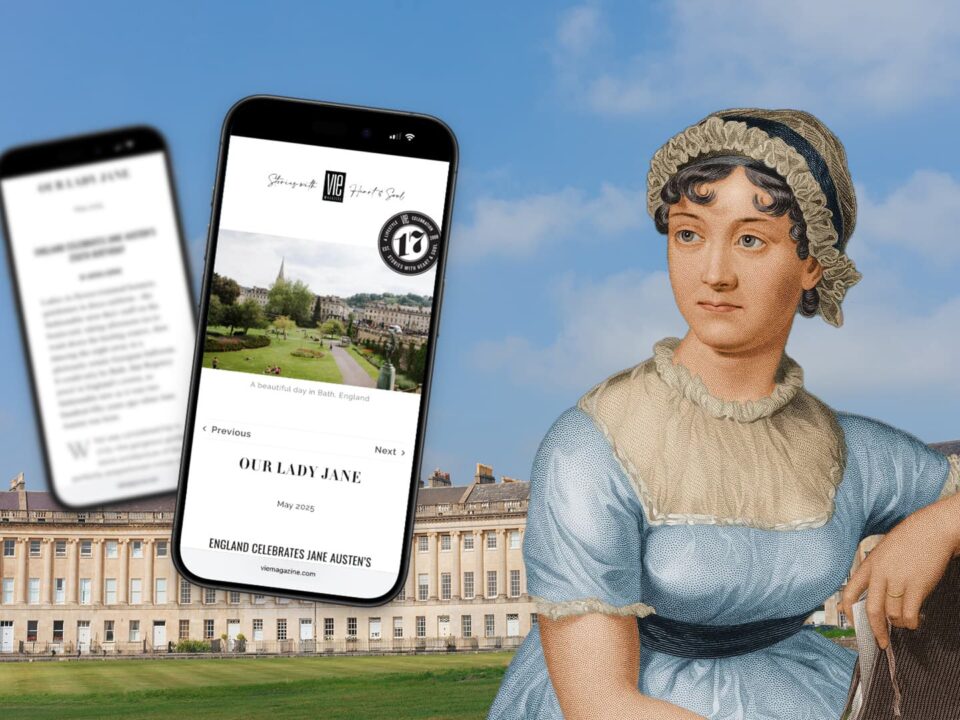
Mining & Dining Around Bath
September 16, 2019
An Evening with Travel Begins At 40
September 20, 2019Postcard from Bath: Bath's Dark Age
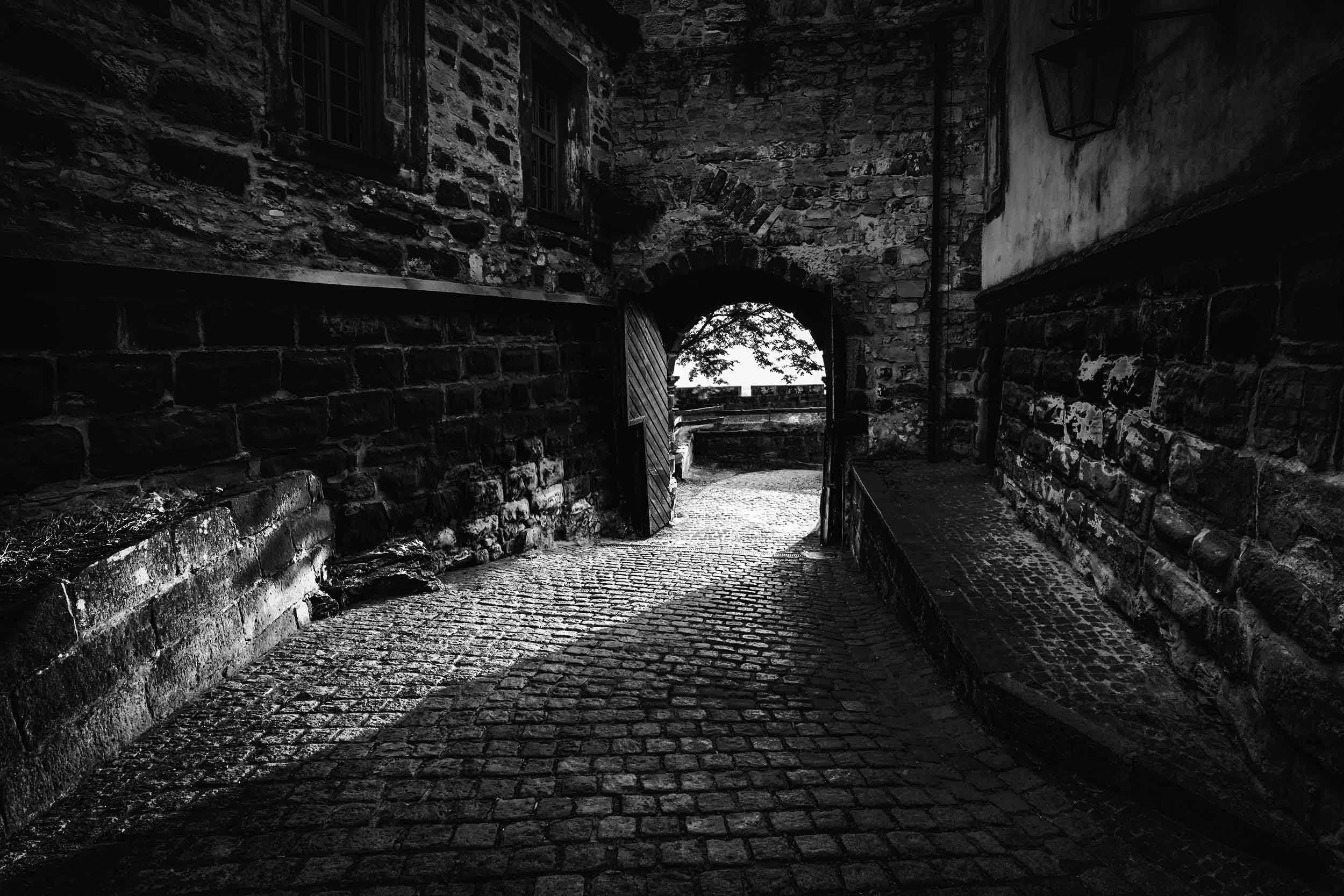
In the lead up to the first issue of Postcard from Bath, Jules received an invitation to contribute a piece of writing that discussed Bath's Dark Ages. We love engaging with the history of our local region, but more importantly, we pride ourselves on our ability to highlight its forgotten stories and tales much-overlooked.
Keen to avoid the much-covered and overdone, Jules set out to properly redefine the history of Bath. It didn't take long for commentary like this to start appearing, 'chaos set in: petty kingdoms, chiefdoms, rivalries, fracture, instability, violence'. The history of Bath started to look a lot less like Georgian tea parties and much more like burly Saxon's sharpening their axes. By the end of the article, Jules had crowned the first King of England and even found time to mention the oncoming sense of peace throughout the land... What an incredible journey through the violent unknown!
We are always delighted to be offered opportunities to critically engage with the tales of Bath's past. Thank you to Steve and everyone at Postcard from Bath for allowing Jules to put his mark on the first issue, he enjoyed it thoroughly!
The Full Article
For many visitors to Bath, the city’s past is one of its most alluring attractions. Its Roman Baths complex is amongst the best preserved treasures of the ancient world whilst its association with Jane Austen and its status as a UNESCO World Heritage City, granted for its unique concentration of Georgian architecture mean both the Romans and Georgians feature highly in the conscience of visitors and locals alike. But though it is fair to say that both these periods deserve their recognition as golden ages in the story of Bath, there is another period for which Bath is less well known, but during which its story is just as fascinating. The Dark Ages.

The Dark Ages in Britain, to me at least, start with departure of the Roman legions from Britain in the late 300s and early 400s AD, when their Roman commander sailed them across the Channel to seize the Emperor’s crown in yet another bloody Roman civil war. They never came back, and the few remaining legionaries in Britannia were recalled not long after to confront the wrath of the hordes of horsed Visigoths who had smashed through the poorly defended Roman north-eastern borders to trot down the Roman roads and lay waste to Rome. The legions departure was no managed decolonisation. There were no lowering of flags, no titular hand-over ceremonies or prolonged farewells. It was a panicked exit, with the expectation that the soldiers would return. They were never to return though, and the people of Britannia found themselves quite suddenly without a centralised authority and with noone to ensure order.
It wasn’t long before the chaos set in: petty kingdoms, chiefdoms, rivalries, fracture, instability, violence. Roman bureaucrats, the men who wrote and maintained records on behalf of the Empire, were mostly part of the Roman Army, so left with the legions. Those that stayed found there were other, more pressing, needs vying for their attention. Record keeping might be critical for maintaining a functioning, complex economy and political system, but its not so important when there is no system and mere survival is uncertain. As new, illiterate and often brutal warlords rose to fill the void left by Roman rule, records were destroyed or discarded, being of little interest to the new despots sitting atop the somewhat charred pile.
It was amongst this scenario that new invaders first arrived on Britain’s shores. The Angles came from Denmark, landing in the north-east, and the Saxons crossed from northern Germany to come ashore in the south. Having begun trading with the Celtic coastal communities, it wasn’t long before they began establishing their own small settlements nearby. Setting up home in Britain offered numerous benefits. No hordes of horsemen at their back, fertile land, and a local population that had forgotten how to fight after 350 years of Roman rule. A trickle of settlers became a stream. Then the stream became a flood. And as Angle and Saxon numbers grew, conflict between them and the Celtic natives became inevitable, frequent and bloody.
Prior to the departure of the legions from Britain, Bath (‘Aqua Sulis’ or ‘Sulis’ Waters’ to the Romans), much like in Georgian times later, was the place to go for upper class Romans to escape to in order to relax, connect and be seen. The good times for the remaining Roman population ended with the army’s exit and within a few years, Bath was a very different place. Once so smart and impressive under Roman rule, it’s population no longer worked hard on serving an itinerant Roman population, but spent their days surviving and trading. The city’s buildings remained in use, but year after year, more cracks appeared. The walls faded and bare brick and tiles were shamelessly exposed as sections of plaster crumbled and fell. The town’s atmosphere, once light and cheery was more sombre and hushed, as its occupants adjusted to the new, less certain world they found themselves in.
The Roman Baths continued to be visited, but Bath now found itself playing a very different role to its previous leisure-orientated one: That of defensive border town. The city stood on one of the few fording points on the River Avon, and in these new times, the town was an important trading settlement in times of peace, and a key defensive post in times of war.

The Saxons, initially a minor source of interest in news from the east, swept westwards with alarming speed in a matter of decades. When the Romans had arrived on the shores of Britain the 1st century BCE, they found the Celts to be warlike and some of the most savage fighters they’d encountered. Now the Celts were almost the exact opposite. The Anglo-Saxon invaders weren’t numerous but their weaponry and warcraft were far superior and they swept across the island, enslaving and incorporating the local population into their own, newly carved, kingdoms. Within 50 years of the first invaders settling on the east coast, Bath found itself on the front line.
Cross any of the bridges in Bath from north to south today, such as the iconic Pulteney Bridge, you’re unlikely to feel anything particular sense of foreboding. Yet in the 500’s, stepping onto the south bank would have meant that, as a Briton, you were now standing in the land of the Saxons. Bath, was where the Celtic Britons, or the ‘Welisc’ (‘Welsh’ or ‘Foreigners’) as the Saxons referred to them – ironically - drew the line. And it is around and about Bath that the natives enjoyed their final, greatest victory but also the defeat that led to one last, final retreat.
The victory came first. Rising above Batheaston is Solsbury Hill, an iron-age hill-fort re-established after the Roman retreat, and the same hill Peter Gabriel sung about, having grown up nearby and spent his youth playing guitar on its summit. It’s here that some think the battle of Badon Mount was fought and won by the legendary King Arthur. Arthur is one of history’s great ironies. Revered and romanticised as an English hero, Arthur, if he existed, spent his life fighting the Saxons, the very people who would become the English. Historically speaking, Arthur is a Welsh hero, celebrated for fighting the English. Whether Arthur existed or not, the battle of Badon Mount was such a bloody and decisive defeat for the Saxons that their advance west was halted for the next 70 years.
The Saxons returned in 577CE, and the showdown was another battle just outside of Bath. This time it was fought at Dyrham Park – a spectacular National Trust owned grand house (used for the exterior shots for the film ‘The Remains of the Day’) that nestles beneath a sculpted hillside. The encounter that took place atop its slopes 1400 years ago was bloody, prolonged and brutal. At the end of the battle, three British Kings lay dead, with the remains of their armies scattered around them. The survivors scattered and the Saxons marched west, arriving at the mouth of the River Avon to split the remaining Celts into two – the West Walis (Welsh) and the Corn Walis (Cornish). Bath was overrun and the experience was probably not a pleasant one for the city’s population. The last of the Celtic kingdoms in ‘England’ were finally crushed and the remaining Celts were forced back into the least fertile extremities of the island: Wales, Cornwall and the Lake District.
It is a fascinating to imagine the newly arrived Saxon overlords, standing in the centre of Bath, close to where the Roman Baths complex is today, with their shields tethered to their backs and their large double-headed battle-axes slung over their shoulders, admiring (amid the screams of the local inhabitants being despatched and defiled) the incredible and perplexing city they had conquered. Many of the Roman buildings had gone, whilst others were in a state of serious decay, but the Roman Baths were still usable even if they were partially ruined. One Saxon was so impressed he wrote one of the most complete Saxon poems to have survived those times. ‘The Ruined City’ almost certainly has to be describing Bath... ‘Bright were the castle buildings, many the bathing-halls’ it says, ‘the work of giants’ with its ‘chipped roofs that are torn and fallen’… Several lines seem to reference things we can see today. The Roman Baths complex for example: ‘Often this wall, lichen-grey and stained with red’ must refer to the sulphur-stained walls and drains visible to visitors, and the ‘red-curved roof parts from its tiles of the ceiling-vault’ accurately describes the tiles and design of the roof section on display to the side of the main bath.
With the Saxons now in charge, the town’s name changed: ‘Hat Bathu’ or ‘Hot Baths’ was the new one, eventually contracting down to ‘Bath’. Life in Saxon Bath differed little from before. The Saxons set up in the ruins, patching masonry and building wooden structures when it became more convenient to knock down and start again. The Roman streets, beginning to disappear under rubble, were increasingly lost under the more traditional wooden homes the Saxons preferred; low-roofed, thatched timber buildings, with walls packed with ‘daub’ (a mix of mud, hair, straw, horse manure and limestone) over a willow framework. Long, thin gardens ran behind each one, used for growing vegetables and rearing animals. The streets would have been boggy and foul; awash with animal excrement, mud and pools of tepid water, the air filled with the cries of livestock, cockerels and the clanking of craftspeople working away at their benches across the town.
With its days as a border town over, the end of the ‘Dark Ages’ saw yet another new chapter in the story of Bath. When the Saxons first arrived in Bath, they tore down the Romano-Celtic Christian structures and symbols built by the town’s Celtic community. Yet within a century, the Saxons themselves would become Christians and the city’s religious importance would revive again. A new convent was established in Bath in 675 and over the following decades, a new monastery and then an abbey would be established – right on top of the old Roman pagan sites which had been so revered centuries earlier – and where Bath Abbey stands today.
And it is in Bath, in my mind at least, that an event that marks the ends the ‘Dark Ages’ and the arrival of the next, the ‘Middle Ages’, occurs. In 973CE, the King of Wessex, Edgar, is crowned the very first ‘King of England’. His coronation is an elaborate ceremony, recorded in the Anglo-Saxon Chronicles, and has been the basis for every English coronation since. Edgar’s coronation marks the final piece in the establishment of the political entity that has gone on to dominate this island right up to today: the Kingdom of England.
Edgar’s decision to be crowned at Bath was not coincidental. By choosing Bath, he deliberately choose a city that reflected a great and glorious, albeit Roman, past with its grand structures forming the backdrop of his investiture. In being crowned ‘King of England’ he announced the sweeping away of the era of petty kingdoms, shifting borders, violence and chaos that had defined the Dark Ages. And in choosing to be crowned inside Bath’s great abbey, Edgar showed that his Kingship was ordained by God, aligning Monarchy with another of key feature of the proceeding ‘Middle Ages’… Religion. Bath’s Dark Age story is therefore one worth telling.

